Chapter 3
![BCM E2 PM [Risk Analysis and Review] Banner](https://blog.bcm-institute.org/hs-fs/hubfs/BCM%20E2%20Blog%20Banner/BCM%20E2%20PM%20%5BRisk%20Analysis%20and%20Review%5D%20Banner.png?width=750&height=150&name=BCM%20E2%20PM%20%5BRisk%20Analysis%20and%20Review%5D%20Banner.png)
Risk Analysis and Review Phase of the BCM Planning Methodology for Bandtree
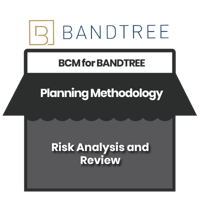
In the rapidly evolving landscape of corporate property management, Bandtree faces a range of risks that could disrupt its operations and impact its ability to deliver seamless services to its clients.
The "Risk Analysis and Review" phase of the Business Continuity Management (BCM) Planning Methodology is crucial in identifying, assessing, and mitigating these risks.
This chapter on RAR examines the fundamental steps of the ISO 22301 framework, tailored explicitly to Bandtree's operational environment.
By recognising potential threats, evaluating their impacts, and implementing mitigation strategies, Bandtree can ensure that its business continuity processes remain robust and resilient.
Regular reviews of the risk landscape will further strengthen its preparedness for any unforeseen disruptions.
The "Risk Analysis and Review" phase is one of the most critical steps in the Business Continuity Management (BCM) Planning Methodology.
This phase aligns with the requirements of ISO 22301 and plays a fundamental role in ensuring that Bandtree Sdn Bhd remains resilient in the face of potential disruptions to its operations.
In this chapter, we will outline the process of identifying, assessing, mitigating, and continuously reviewing risks that could affect Bandtree’s corporate property management operations.
Through this systematic approach, the company will build a strong foundation for long-term operational continuity and resilience.
1. Identifying Risks
The first step in the "Risk Analysis and Review" phase is identifying potential risks that could disrupt the smooth functioning of Bandtree’s operations.
A risk could originate from internal or external factors, and it is essential to recognise these risks early to prepare adequately.
Examples of potential risks for Bandtree:
- Natural Disasters: As a company operating in Brunei, Bandtree must consider the possibility of natural disasters such as floods, which could affect its physical properties and infrastructure management services.
- Cybersecurity Threats: With an increasing reliance on digital tools and data storage, Bandtree faces potential risks of cyberattacks that could compromise sensitive client information or disrupt property management systems.
- Regulatory Changes: Changes in government policies or regulations related to property management, construction standards, or land use could create operational challenges or necessitate changes to existing processes.
- Economic Instability: Fluctuations in the local economy or global markets could impact demand for property management services, causing financial strain and affecting Bandtree’s cash flow and operations.
2. Assessing Risks
Once risks are identified, the next step is to assess their likelihood of occurring and the potential impact they may have on Bandtree’s operations.
This step helps prioritise risks based on their severity and probability, allowing the company to focus on the most critical threats.
Example Risk Assessment for Bandtree:
- Cybersecurity Threats: The likelihood of a cyberattack is moderate, considering the increasing frequency of such events in the region. However, the impact would be high if sensitive client data or operational systems were compromised, potentially leading to severe reputational damage and financial loss.
- Natural Disasters: The likelihood of flooding in Brunei is relatively low due to its geographical location; however, the impact could be significant if key properties or infrastructure were damaged, resulting in delays in service delivery and increased repair costs.
- Regulatory Changes: Regulatory changes are more likely, given the evolving nature of the real estate and property management sector. The impact could range from moderate to high, depending on the scope and nature of the changes.
By scoring risks on both likelihood and impact, Bandtree can develop a risk matrix that clearly illustrates which risks need the most attention.
3. Mitigating Risks
After assessing the risks, Bandtree must implement controls to reduce these risks to an acceptable level. Risk mitigation strategies may vary depending on the type of risk, its impact, and available resources.
The goal is to implement proactive measures that minimise the likelihood of the risk occurring or reduce its impact if it does happen.
Examples of risk mitigation for Bandtree:
- Cybersecurity Threats: Implementing advanced firewalls, encryption technologies, and multi-factor authentication systems to secure client data and property management systems. Regular cybersecurity training for employees can also help mitigate human error, a common cause of breaches.
- Natural Disasters: Bandtree can invest in flood-resistant infrastructure and ensure that all properties are insured against natural disasters. Additionally, creating a business continuity plan for disaster response can help Bandtree recover quickly in the event of a flood or other calamity.
- Regulatory Changes: To mitigate risks associated with regulatory changes, Bandtree could establish a government relations team to monitor policy shifts. The team can collaborate with local authorities to ensure compliance with new regulations and assess the impact on operations.
- Economic Instability: Bandtree can diversify its property portfolio to include a mix of commercial, residential, and governmental properties, thereby reducing its reliance on any single segment. Furthermore, establishing a reserve fund can provide financial security in times of economic instability.
4. Continuous Review
The risk landscape is constantly evolving. Therefore, it is crucial to regularly update Bandtree’s risk profile to reflect changes in both the internal and external business environment. Continuous review ensures that new risks are identified, and existing risks are reassessed as the company grows and as the external environment changes.
Ongoing risk review practices for Bandtree:
- Risk Audits: Bandtree should conduct regular internal audits to assess the effectiveness of its risk mitigation strategies. These audits can help identify new or emerging risks and ensure that current mitigation measures are working.
- Market and Environmental Monitoring: By staying informed about changes in the local economy, government policies, and industry trends, Bandtree can proactively adjust its risk management strategies.
- Feedback Loops: Gathering feedback from employees, clients, and other stakeholders about potential risks or operational disruptions will help Bandtree address emerging issues that may not have been initially identified.
The continuous review process is vital in ensuring that Bandtree’s risk management practices remain up-to-date and effective in the face of ever-changing challenges.
Summing Up ...
The "Risk Analysis and Review" phase of the BCM Planning Methodology is central to Bandtree’s efforts to ensure business continuity and resilience.
By systematically identifying, assessing, and mitigating risks and committing to a process of continuous review, Bandtree can protect its operations from a wide range of threats.
Through these efforts, the company will not only comply with ISO 22301 but also create a resilient foundation for long-term success, enabling it to navigate potential disruptions with confidence and efficiency.
This proactive and dynamic approach will empower Bandtree to adapt to changing circumstances while continuing to provide high-quality property management services to its clients.
Resilience Redefined: Implementing BCM at Bandtree Sdn Bhd Brunei |
||||
| eBook 2: Implementing Business Continuity Management |
||||
| C1 | C2 | C3 | C4 | C5 |
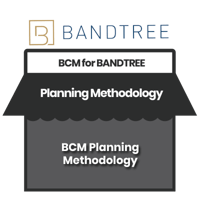 |
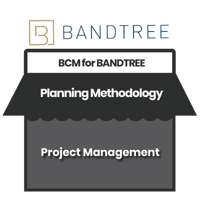 |
 |
 |
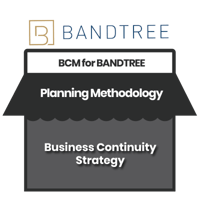 |
| C6 | C7 | C8 | C9 | C10 |
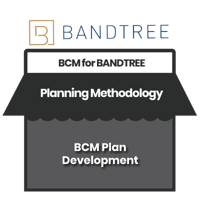 |
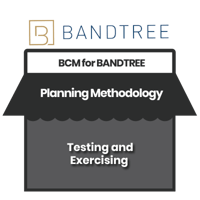 |
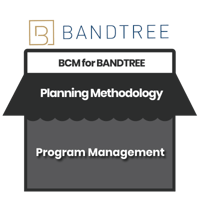 |
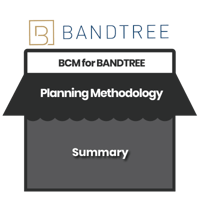 |
 |





![Register [BL-B-3]*](https://no-cache.hubspot.com/cta/default/3893111/ac6cf073-4cdd-4541-91ed-889f731d5076.png)



![FAQ [BL-B-3]](https://no-cache.hubspot.com/cta/default/3893111/b3824ba1-7aa1-4eb6-bef8-94f57121c5ae.png)
![Email to Sales Team [BCM Institute]](https://no-cache.hubspot.com/cta/default/3893111/3c53daeb-2836-4843-b0e0-645baee2ab9e.png)





